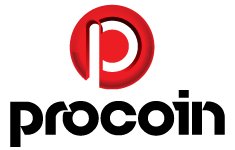Achieving effective micro-targeted personalization hinges on the quality, accuracy, and timeliness of your data sources. Without a robust data integration strategy, efforts may result in fragmented customer insights, misguided personalization efforts, and ultimately, reduced conversion rates. This deep dive explores the concrete steps and technical considerations necessary to select, set up, and govern data pipelines that empower hyper-personalized shopping experiences.
Table of Contents
1. Selecting High-Impact Data Points for Micro-Targeting
The foundation of micro-targeted personalization is collecting data that accurately reflects customer intent, preferences, and behavior. To do this effectively, identify data points that deliver the highest predictive value for personalization without overwhelming your systems or infringing on user privacy.
| Data Point | Description | Use Case |
|---|---|---|
| Purchase History | Detailed records of past transactions, including product categories, frequency, and monetary value. | Personalized product recommendations, lifetime value prediction, loyalty segmentation. |
| Browsing Behavior | Clickstream data, page dwell time, scroll depth, search queries. | Real-time product suggestions, content personalization, abandonment prevention. |
| Demographic Data | Age, gender, location, income level, device type. | Segment-specific messaging, regional offers, device-optimized experiences. |
| Engagement Metrics | Email opens, click-through rates, social shares, review activity. | Behavioral scoring, churn prediction, personalization of follow-up campaigns. |
Actionable Tip:
Prioritize data points that can be captured passively during user interactions, such as browsing behavior and engagement metrics, to reduce friction and improve data freshness. Use a weighted scoring model to rank data points based on their predictive power for your specific personalization goals.
2. Building and Automating Data Collection Pipelines
Once high-impact data points are identified, establishing reliable, scalable pipelines to ingest, process, and store this data is critical. Effective pipelines enable real-time or near-real-time personalization, ensuring the user experience remains dynamic and relevant.
a) Integrating with CRM and ERP Systems
Leverage APIs and middleware to synchronize transactional and customer data between your e-commerce platform and backend systems. Use ETL tools like Apache NiFi, Talend, or custom scripts to automate data flow. For example, set up a scheduled job that extracts purchase history daily and updates your customer profiles in the personalization engine.
b) Implementing Tracking Scripts and Tag Management
Deploy JavaScript-based tracking pixels (e.g., Google Tag Manager, Tealium) on your website to capture real-time browsing data. Use custom dataLayer variables to segment user actions. For instance, trigger data pushes to your data lake when a user adds an item to the cart or views a specific category.
c) Incorporating Third-Party Data APIs
Augment your customer profiles with external data sources such as social media activity, credit scoring, or geolocation services. Use API gateways and rate-limiting strategies to prevent bottlenecks. For example, integrate a geolocation API to dynamically adjust product recommendations based on user location.
| Pipeline Element | Best Practices | Common Pitfalls |
|---|---|---|
| Data Extraction | Automate with scheduled jobs, ensure minimal impact on source systems. | Overloading source systems, missing incremental updates. |
| Data Transformation | Normalize data schemas, handle missing data gracefully, apply schema validation. | Data inconsistencies, schema drift, delayed processing. |
| Data Loading | Use scalable storage solutions like cloud data warehouses (BigQuery, Snowflake). Implement idempotent loading. | Duplicate data entries, latency issues. |
3. Ensuring Data Privacy and Regulatory Compliance
Building data pipelines without regard to privacy regulations can lead to legal issues and damage brand reputation. Implementing privacy-first methodologies ensures that your personalization efforts are sustainable and ethically sound.
a) User Consent Management
Use consent management platforms like OneTrust or TrustArc to obtain, record, and honor user permissions. Implement granular controls allowing users to opt-in or out of specific data collection activities, such as targeted advertising or analytics tracking.
b) GDPR and CCPA Compliance Strategies
Adopt data minimization principles, ensure data is stored securely, and provide easy mechanisms for data deletion upon user request. For example, automate data purging workflows that delete or anonymize user data after a specified retention period.
c) Data Security and Access Control
Implement role-based access controls (RBAC), encrypt data at rest and in transit, and audit access logs regularly. Use tools like HashiCorp Vault or cloud-native security features to prevent unauthorized data exposure.
Expert Tip: Regularly audit your data pipelines for compliance gaps using automated tools and stay updated on evolving regulations. A proactive approach reduces risk and enhances customer trust.
Conclusion: From Data to Personalized Customer Journeys
Integrating precise data sources through well-designed pipelines is the backbone of successful micro-targeted personalization. By carefully selecting high-impact data points, building automated, scalable pipelines, and embedding privacy safeguards, e-commerce brands can deliver highly relevant experiences that boost engagement and conversions.
For a broader understanding of strategic personalization frameworks, refer to this foundational guide. To explore how these principles fit within a comprehensive personalization strategy, review this in-depth Tier 2 article.
